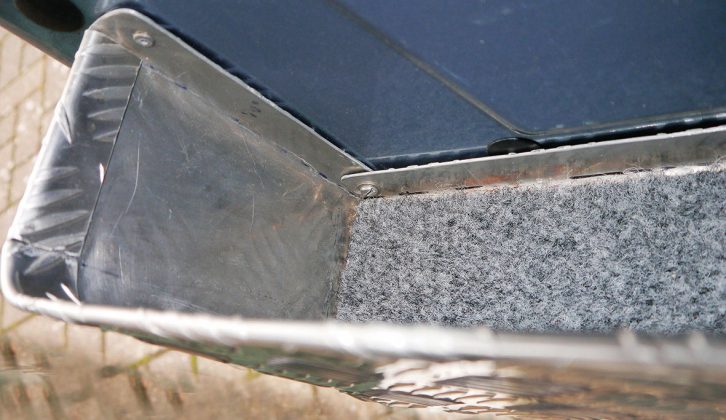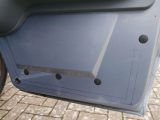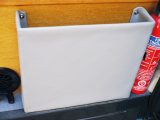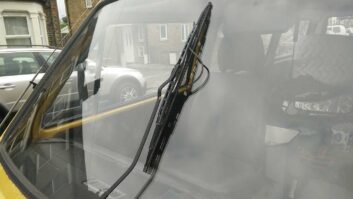I enjoy customising my motorhome with a few DIY projects to get the best out of the small space on holiday. Recently I made a DIY wine glass holder for our ‘van to stop the glasses smashing in transit. Then I decided to see if I could add an extra storage cubbyhole.
Handy storage space is at a premium in small campervans like ours. I decided to make a second storage pocket on the passenger door, mounted below the standard one fitted at the factory. This easy DIY project has made a welcome addition to our ‘van, and you can easily adapt the design to suit your needs in your own motorhome.
Before starting, plan the ideal shape and dimensions you need to ensure that the door will still close. Use a sheet of thin Manila card to draw and cut out a template that can be folded and taped in position. It’s then very easy to modify and correct the card template version until you get the right shape and size for your ‘van’s door.
Ply or aluminium – the choice is yours
You may choose to make this extra door pocket out of plywood or, if you’ve ever worked with sheet metal before, you could go for 1-2mm aluminium sheet. Unlike plywood, the metal allows you to form curves at the ends. I chose checkerplate, so that the new door pocket will be less likely to suffer damage and dents when kicked (children’s little feet can be surprisingly strong).
I made the pocket from one piece of metal by first folding over the top edge for strength and safety, and gradually bending the sheet round to match the template. I finished by bending in the final 15mm or so to form the fixing flange that is in contact with the door.
(As I don’t have a press brake, I bent the thin sheet of metal with a homemade array of tools. I just searched the web for ideas on ways to do this as neatly as possible.)
If you don’t mind the sharp corners, cut pieces of 5mm plywood, pin them and fix them with PVA wood glue. Next you should cover the plywood with some thin padding and vinyl sheet. You can also strengthen the top edge with wooden D-moulding.
Better still, get some easy-to-bend aluminium strip, as described above. When this is folded over the ply and its coverings, it will bind them together. To secure the aluminium strip to the thin plywood, use pop rivets, which are stronger than small screws. Choose rivets that are the thickness of the aluminium and plywood together but not so long that they stick out the back.
You can simplify the job of attaching the new pocket to the door by folding the fixing flange out; this allows better access to the pop rivets or self-tapping screws.
Hide the fixings
For an even better finish, though, bend the flange in and over so that you have hidden the fixings. At the top of the flange, there will probably be room for you to use a pop rivet gun inside the pocket, but as you work on fixings further down the sides and at the bottom, you will need to use self-taps or bolts in tapped holes. Mark out the fixing holes, drill them and use a small socket set or an angled ratchet screwdriver to tighten the fixings. Job done!
Practical Motorhome‘s expert John Wickersham recently wrote about motorhome DIY pros and cons. He mentioned some similar DIY motorhome projects that enhance a ‘van – and this is definitely one of those. It doesn’t take long to make and it’s a worthwhile addition to our compact van conversion.
Unlike plywood, the metal allows you to form curves at the ends





















